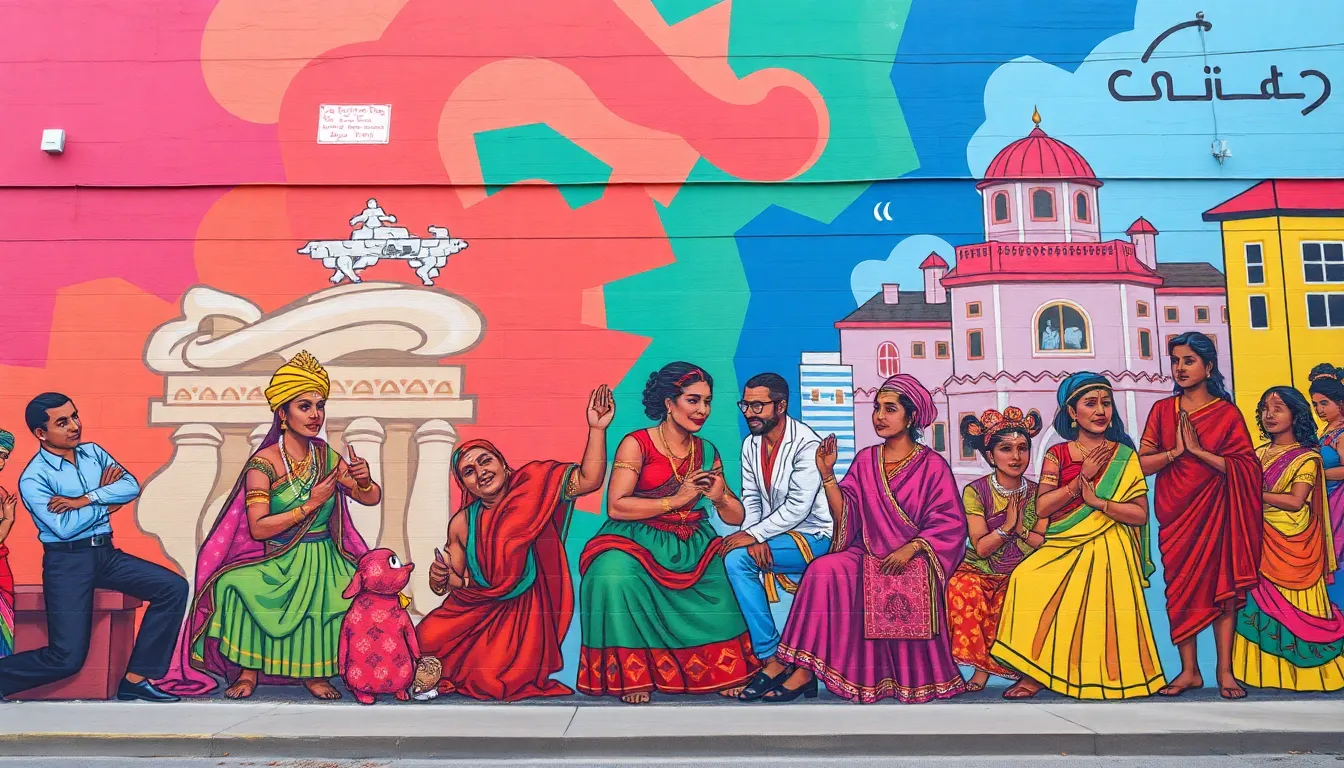In a world buzzing with trends and fads, few things capture attention quite like “θναλομε.” This intriguing term might sound like a spell from a wizarding world, but it holds the key to unlocking fascinating insights that could elevate your understanding of contemporary culture.
Table of Contents
ToggleUnderstanding Θναλομε
Θναλομε represents a multifaceted concept with significance in cultural contexts. It offers insights into contemporary trends, influencing various aspects of society. Diving into its definition reveals its connections with popular culture, social movements, and emerging ideas.
Cultural relevance defines Θναλομε’s importance. Individuals and communities often engage with its principles, reflecting broader societal dynamics. Trends associated with Θναλομε can shape behaviors, preferences, and collective identities.
Emerging from this term is a curiosity about its origins. Researchers note that its roots intertwine with specific cultural practices and philosophies. Contextualizing Θναλομε facilitates a deeper understanding of its impact across different groups.
Awareness of Θναλομε also cultivates critical conversations. Discussions surrounding its implications extend to various fields, including sociology, marketing, and art. Each domain offers unique perspectives on how Θναλομε shapes and mirrors cultural phenomena.
Several examples illustrate the term’s influence. Marketing campaigns leverage Θναλομε to resonate with targeted audiences. Artists incorporate its themes into their work, prompting audiences to reflect on contemporary issues.
Engaging with Θναλομε encourages individuals to explore their values. It invites introspection about how modern culture informs personal and collective beliefs. This exploration nurtures a richer understanding of identity in a rapidly changing world.
History of Θναλομε

The term θναλομε holds a rich historical background that unfolds through various cultural lenses.
Origin and Evolution
Originating from specific cultural practices, θναλομε reveals deep ties to ancient philosophies. Early usage tied closely to ritualistic traditions in a particular region, where it symbolized profound connections within community structures. As societies evolved, its meaning expanded, adapting to contemporary practices and thoughts. Over time, θναλομε transformed into a means of communication reflecting societal changes. It gained significance in different contexts, illustrating the fluid nature of cultural terminology.
Cultural Significance
The cultural significance of θναλομε extends across multiple domains. Within popular culture, it influences various artistic expressions such as music, visual art, and literature. Social movements often utilize θναλομε to resonate with collective identities, enhancing group solidarity. Marketing strategies leverage this term to tap into contemporary trends, connecting brands to consumer values effectively. In academia, discussions surrounding θναλομε foster critical discourse in fields like sociology and cultural studies, spotlighting its relevance in shaping perceptions. Each interaction with θναλομε invites further exploration and understanding of its critical role in modern culture.
Applications of Θναλομε
Understanding θναλομε extends to various applications across contemporary and traditional contexts. These insights reveal its multifaceted nature and relevance in today’s society.
In Modern Practices
Businesses integrate θναλομε into marketing campaigns to resonate with modern audiences. Brands utilize its principles to engage consumers, driving emotional connections through targeted messaging. Social media platforms reflect θναλομε by showcasing trends and fostering community interaction. Artists adopt themes of θναλομε in their works, prompting conversations around cultural identity. These practices highlight its evolving significance in digital culture.
In Traditional Contexts
In ancient societies, θναλομε represented communal ties and shared philosophies. Rituals utilized its concepts, reinforcing social bonds among community members. Historical texts often illustrate θναλομε in philosophical discussions, laying foundational ideas for later interpretations. Cultures embraced θναλομε, shaping local customs and beliefs over time. Its traditional applications continue to influence modern perspectives, illustrating enduring relevance across generations.
Benefits of Θναλομε
Understanding θναλομε provides numerous advantages across various fields. Cultural insights emerge that help individuals grasp contemporary trends. This term encourages critical dialogue regarding social movements and identity formation.
In marketing, θναλομε enables businesses to connect deeply with target audiences. Campaigns leveraging this concept resonate on emotional levels, enhancing brand loyalty. Brands tapping into its cultural significance foster meaningful consumer relationships.
Communities benefit from discussing θναλομε as it promotes shared values and connections. Rituals associated with the concept strengthen social ties among individuals. Engaging in conversations around θναλομε cultivates a sense of belonging in diverse groups.
Artists exploring θναλομε in their work often trigger reflections on identity and societal changes. This term serves as a common thread that links various forms of artistic expression. Visual art, music, and literature gain depth through the integration of this concept.
Academically, θναλομε sparks critical analysis in sociology and cultural studies. Researchers examine how the term shapes perceptions and influences collective behaviors. Expertise in this area allows for informed discussions surrounding cultural phenomena.
Overall, the benefits of θναλομε extend well beyond individual understanding, impacting communication, creativity, and community engagement. Recognizing its influence fosters awareness and inspires positive change within societies.
Understanding θναλομε opens doors to a deeper appreciation of contemporary culture. Its multifaceted nature highlights not only its historical roots but also its relevance in today’s societal dynamics. As individuals engage with this concept, they can better navigate the complexities of identity and community.
The term serves as a bridge between past and present, fostering critical conversations across various fields. By recognizing its influence on trends and social movements, people can cultivate a more nuanced perspective on their own beliefs and values. Embracing θναλομε ultimately enriches personal and collective experiences, inspiring reflection and encouraging meaningful connections in an ever-evolving cultural landscape.




